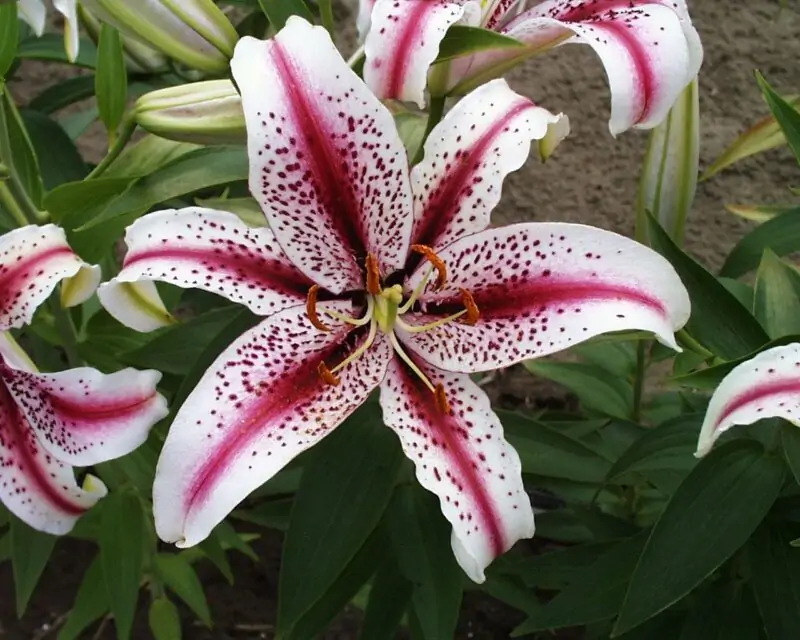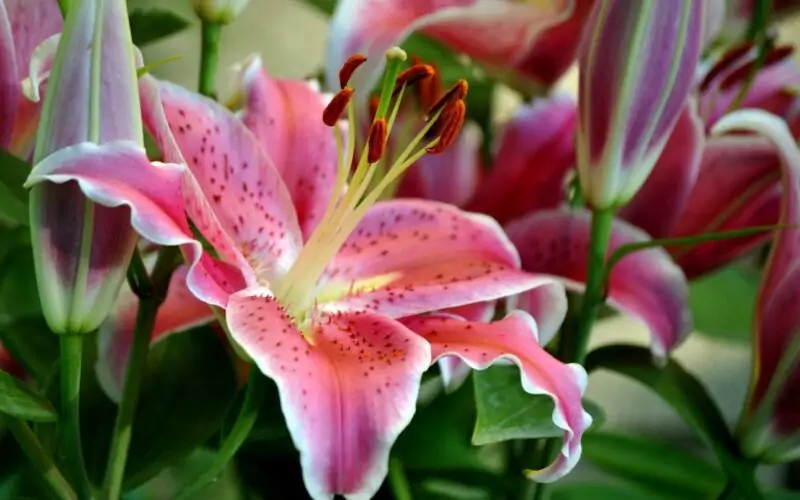How to Plant and Grow Oriental Lilies in Your Garden

Hello there, budding gardeners and green thumbs alike! Today, we’re going to explore one of the most loved flowers in gardening: oriental lilies. Known for their beauty and fragrant aroma, these flowers are a favorite in many gardens across the world. They could also be the next addition of magnificent flowers in your very own garden.
In our comprehensive guide, we’ll delve into understanding what these beauties are, how they differ from other types of lilies, and their unique characteristics. We’ll also walk you through the steps needed to grow this exotic beauty yourself – from selecting quality bulbs and understanding the right soil conditions to the actual planting and caring process.
Understanding Oriental Lilies
The Difference Between Asiatic and Oriental Lilies
Let’s kick things off by understanding the difference between Asiatic lilies and their oriental cousins. Both being members of the large Lilium genus, they are beloved by many gardeners. Asiatic lilies are known for their early bloom time and minimal fragrance, often showing their colors in late spring. On the flip side, the orientals, those late-summer bloomers, are coveted for their powerful, sweetly smells that fill the garden air, ensuring their presence is felt as well as seen.
Unique Characteristics of Oriental Lilies: Fragrance, Petal, and Stamen
What really sets these apart from the crowd? It’s their unmistakable combination of mesmerizing aromas, large, vibrant petals, and prominent stamens. This trio of traits makes oriental lilies a standout choice for gardeners. The captivating scent of this lily can transform your garden into a fragrant haven, while their generously sized, often brightly colored flowers bring an exotic touch that’s hard to overlook.
Variety of Oriental Lilies
Depending on the variety, the blossom differs. In the world of blooms, there are many oriental varieties to choose from. Each type brings something different to the table in terms of color, size, and scent. For instance, the Stargazer lily impresses with its upward-facing, rich pink flowers, whereas the Casa Blanca boasts large, stunning white blooms and a strong, pleasant aroma. With such diversity, there’s something for every gardener’s taste and garden’s theme!
Preparing to Plant
The Right Lily Bulbs: Choosing Quality Oriental Lily Bulbs
Before you embark on your lily planting journey, you must select quality bulbs. A healthy bulb should be firm to the touch, show no signs of mold or damage, and appear vibrant. Look for bulbs that measure about 6-8 centimeters in diameter. This size ensures that your lily will have a sturdy stem and a magnificent bloom, adding a touch of grandeur to your garden.
Soil Requirements
When it comes to they have town their preferences. Lilies like well-drained soil that’s enriched with organic matter. This rich mixture creates the ideal environment for the lily bulbs to sprout and for the plant to grow and thrive. To maintain moisture, and add extra nutrients, consider applying a layer of mulch.
Considering Light and Shade
Picking the right spot is crucial. These plants enjoy locations with full sun or partial shade. They need around 6 hours of sunlight daily to ensure healthy growth and spectacular blooming. However, in hotter regions, they appreciate a bit of afternoon shade to protect them from excessive heat.
How to Grow Oriental Lilies

Planting Oriental Lilies: From Bulb to Blossom
Now, let’s get to the exciting part – the planting process! Once you’ve chosen your bulbs and prepared your garden, you’re all set. Dig a hole about 12 inches deep – this gives the roots enough space to grow and supports the tall stems. Place your bulb with the pointy end facing upward – that’s the direction your lily wants to grow. Cover it with soil, give it good water, and wait for the magic to happen. The best time to plant is during the mild temperatures of spring or fall, as this allows the bulbs to establish before the intense weather of summer or winter.
Care for Your Lilies: Ensuring a Brightly Colored Flower
Oriental lilies are not just beautiful; they’re pretty low-maintenance too. Water them thoroughly after planting and regularly afterward to keep the ground moist but avoid overwatering – good drainage is crucial to avoid rotting bulbs. A layer of mulch can help retain moisture, especially in dry climates. Feed your lilies with a balanced fertilizer in early spring and after flowering to support growth and blooming. Remember, these towering beauties might need a stake for support when they start to bloom, especially in windy conditions.
Hybrid Lilies: Growing Hybrid Oriental-Asiatic Lilies
Looking for even more variety in your garden? Consider the orienpet or OT hybrids, a fantastic breeding success that combines the best of oriental and trumpet lilies. These hybrids offer the robustness of Asiatic lilies with the fragrant, showy blossoms of orientals. Reaching heights of up to 6 feet, these long-lasting lilies provide an impressive display in the mid-to-late summer garden.
Lilies Add Exotic Charm: Positioning and Combining with Other Plants
To truly make your garden an exotic spectacle, think about the position of your lilies and the surrounding plants. Oriental lilies, due to their height, create a stunning backdrop for shorter flowers. They pair well with perennials that offer contrasting foliage. Consider combining your lilies with plants like roses or lavender for a visually and aromatically appealing garden display.
Common Challenges and Solutions
Common Diseases and Pests of Lilies: Prevention and Treatment
Like any other plant, lilies can attract certain pests and diseases. They can tolerate some abuse but are not invulnerable. Common threats include the lily beetle and diseases like botrytis or root rot. Keep an eye out for any signs of damage and take swift action. Hand-picking can handle lily beetles, while proper spacing and good drainage can prevent many diseases.
Troubleshooting Common Issues: From Bulb to Flower
If you’re facing problems, don’t despair. Many issues can be overcome with a little troubleshooting. If your lilies aren’t blooming, it could be due to too little sunlight or overcrowded bulbs. If the stems are weak, your plants might need staking or protection from wind. Remember, every challenge is a learning opportunity. These lilies bloom best when you take care of them.
FAQs
They enjoy full sun to partial shade. They need about six hours of sunlight a day to ensure healthy growth and blossoming.
Water your lilies thoroughly after planting, and then keep the ground consistently moist. However, make sure your soil drains well to avoid waterlogged conditions, which can harm the bulbs.
Absolutely! They can make a spectacular display in pots or containers. Just ensure that your container has good drainage and is deep enough to accommodate the lily bulbs.
Conclusion
There you have it, the ins and outs of growing oriental lilies in your garden. These striking, fragrant flowers are a true treat for the senses, and with a bit of care and attention, you can enjoy their spectacular display every summer. Furthermore, they are easy to grow, making them an ideal choice whether you’re an experienced gardener or just starting out. And remember, a fragrant oriental bloom makes an excellent cut flower gift. Happy planting and growing!